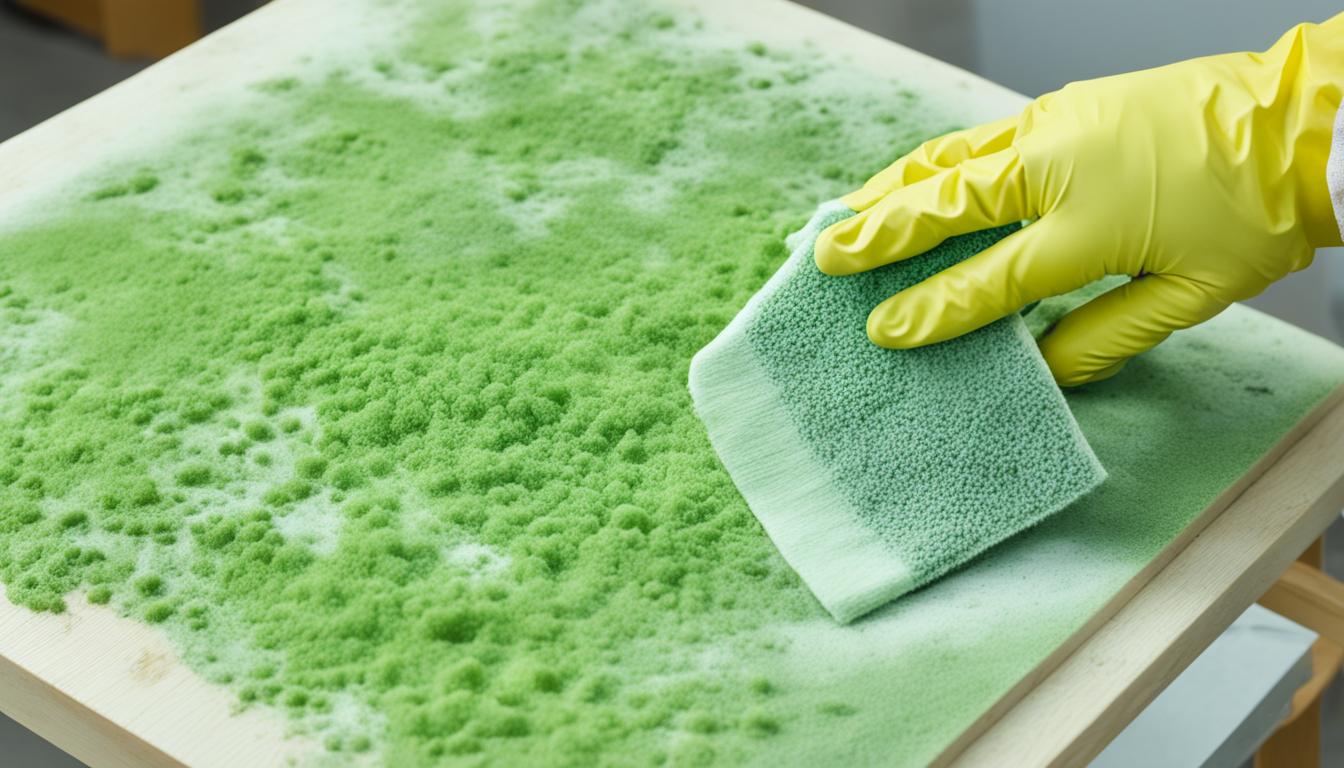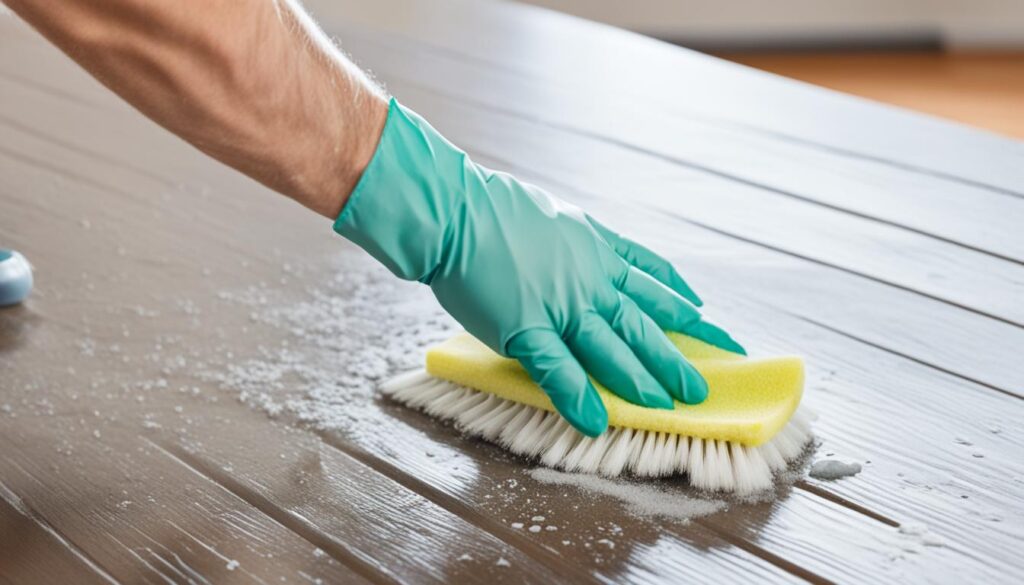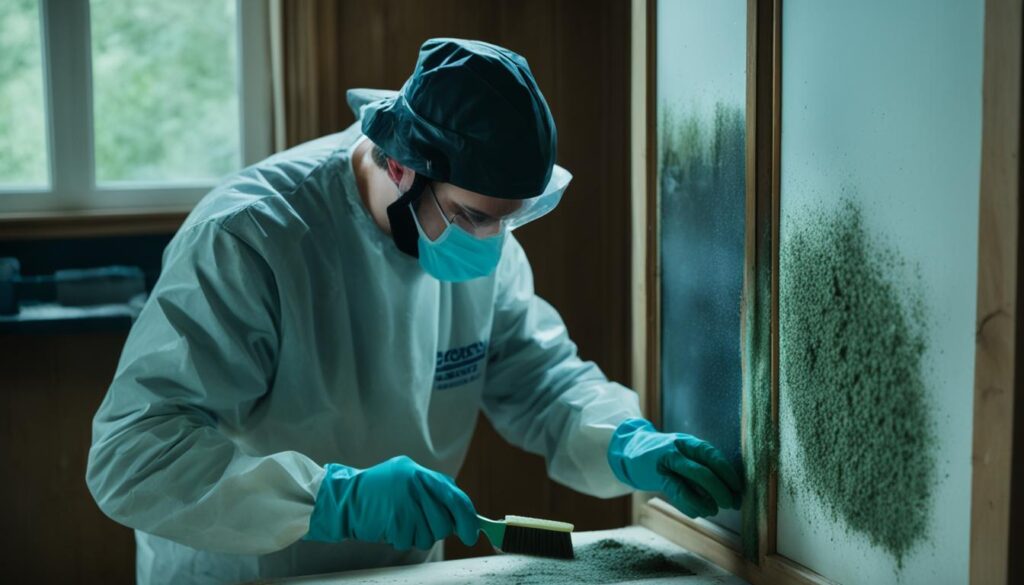
Combat Mold on Furniture: Tips & Fixes
Welcome to our guide on how to fix moldy furniture and restore its original condition. Dealing with mold growth on furniture can be a frustrating and potentially hazardous problem. However, with the right techniques and solutions, you can effectively combat mold and bring your furniture back to life.
In this section, we will provide expert tips and strategies for cleaning mold off furniture, as well as repairing and restoring the affected pieces. Whether you are facing minor mold growth or more severe damage, these methods will help you restore the appearance and functionality of your furniture.
Key Takeaways:
- Combat mold on furniture by following expert tips and techniques.
- Properly clean and remove mold from furniture using recommended methods.
- Repair and restore moldy furniture to its former glory.
- Take preventive measures to protect your furniture from future mold growth.
- Seek professional assistance if dealing with a severe mold issue.
Furniture Mold Removal and Cleaning Techniques
When mold infests your furniture, it can be daunting to know where to start with the cleaning process. In this section, we will explore various techniques for effectively removing mold from furniture and cleaning the affected areas. Whether you prefer using specialized mold cleaners or opting for DIY solutions, we have you covered with step-by-step instructions and expert recommendations to ensure proper furniture mold removal.
Cleaning Mold Off Furniture
Before undertaking any mold removal process, it’s crucial to prioritize safety. Wear protective gear, including gloves, goggles, and a mask, to avoid any potential health hazards. Here’s a simple method to help you clean mold off your furniture:
- Start by carefully taking your furniture outdoors or to a well-ventilated area to prevent mold spores from spreading indoors.
- Using a soft-bristled brush, gently remove any loose mold spores and debris from the furniture’s surface.
- Next, create a cleaning solution by combining equal parts of white vinegar and warm water.
- Dampen a clean cloth with the vinegar solution and gently wipe down the mold-infested areas, ensuring thorough coverage.
- For stubborn mold stains, sprinkle a small amount of baking soda directly on the affected area and scrub it gently with the vinegar-dampened cloth.
- Rinse the furniture with clean water and dry it thoroughly.
- To further prevent mold growth, consider applying a mold-resistant sealant or protecting the furniture with a moisture barrier.
Remember, this method is suitable for small-scale mold issues. If your furniture has extensive mold growth or valuable antique pieces, it’s best to consult a professional mold remediation specialist.
Best Mold Cleaner for Furniture
When dealing with more severe mold contamination, using a specialized mold cleaner can be highly effective. Look for products containing ingredients like hydrogen peroxide or chlorine dioxide, as they have proven efficacy against mold. Before using any mold cleaner, always follow the manufacturer’s instructions and conduct a patch test on a small, inconspicuous area of the furniture to ensure it doesn’t cause discoloration or damage.
DIY Mold Removal for Furniture
If you prefer a DIY approach, there are several natural remedies you can try to remove mold from your furniture:
- Vinegar: As mentioned earlier, vinegar is a versatile and effective natural cleaner that can help eliminate mold.
- Tea tree oil: Mix a teaspoon of tea tree oil with a cup of water and spray it onto the mold-infested areas. Let it sit for several hours before wiping it clean.
- Hydrogen peroxide: Combine equal parts of hydrogen peroxide and water, then apply it to the moldy furniture using a spray bottle or cloth. Allow it to sit for 10-15 minutes before rinsing it off.
Experiment with these DIY solutions, but be mindful of any adverse effects and discontinue use if you notice any damage or unfavorable reactions.

With effective cleaning techniques and the right mold cleaner for furniture, you can rescue your beloved pieces from the clutches of mold. Remember to prioritize safety, and if you’re unsure or dealing with extensive mold growth, it’s always advisable to seek professional assistance.
Moldy Furniture Repair and Restoration
When faced with moldy furniture, it’s important to take prompt action to prevent further damage and restore its condition. In this section, we will guide you through the process of repairing and restoring your mold-infested furniture, ensuring its former glory is regained.
Fixing Structural Damage
Mold can cause significant structural damage to furniture, compromising its integrity and functionality. Here are some steps to repair the structural damage caused by mold:
- Assess the extent of the damage: Identify areas where mold has weakened the furniture’s structure.
- Remove mold-infested material: Carefully remove moldy portions of the furniture, ensuring you don’t cause further harm.
- Repair or reinforce weakened areas: Depending on the severity of the damage, apply suitable techniques such as patching, reinforcing with wood filler, or replacing damaged components.
- Ensure proper ventilation: Implement measures to enhance airflow and minimize moisture accumulation, as this can help prevent future mold growth.
Preventing Future Mold Growth
Prevention is key when it comes to dealing with mold on furniture. By taking proactive measures, you can protect your furniture from mold infestations. Here are some preventive measures to consider:
- Maintain proper humidity levels: Use dehumidifiers or air conditioners to keep humidity levels between 30% and 50%, as mold thrives in damp environments.
- Inspect regularly: Regularly inspect your furniture for signs of mold growth, such as musty odors, discoloration, or visible spores.
- Keep furniture dry: Quickly address any spills or water damage to prevent mold from finding a moist environment to grow.
- Apply mold-resistant treatment: Use mold-resistant products or coatings to add an extra layer of protection to your furniture.
Incorporating these preventive measures into your routine maintenance can significantly reduce the risk of mold growth on your furniture.

Conclusion
In conclusion, this article has provided valuable tips and techniques to effectively fix moldy furniture and restore its appearance and functionality. Mold growth on furniture can be a common problem, but by following the methods outlined here, you can address it with confidence.
It is important to approach mold removal and restoration with caution, as exposure to mold can pose health risks. If you are unsure about handling a severe mold issue or dealing with extensive damage, it is highly recommended to seek professional assistance. They have the expertise and equipment necessary to safely and effectively address the problem.
For mold assessments, prevention, and remediation in the Miami area, you can turn to Fix Mold Miami. Their team of experienced professionals can provide comprehensive services to identify and eliminate mold issues in your home or office. Contact Fix Mold Miami at 305-465-6653 for reliable assistance with mold-related concerns.




